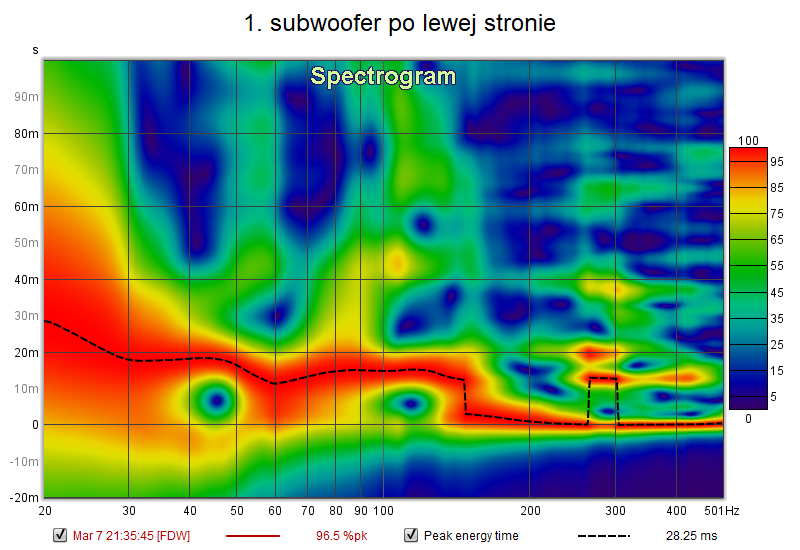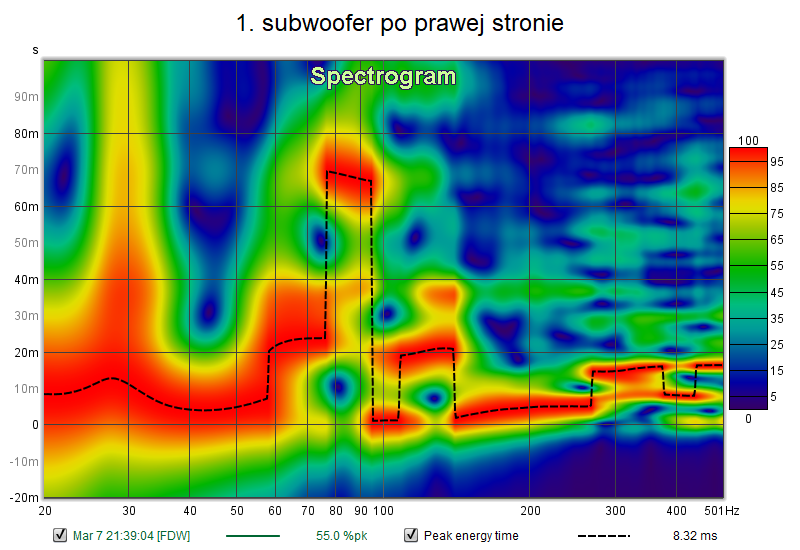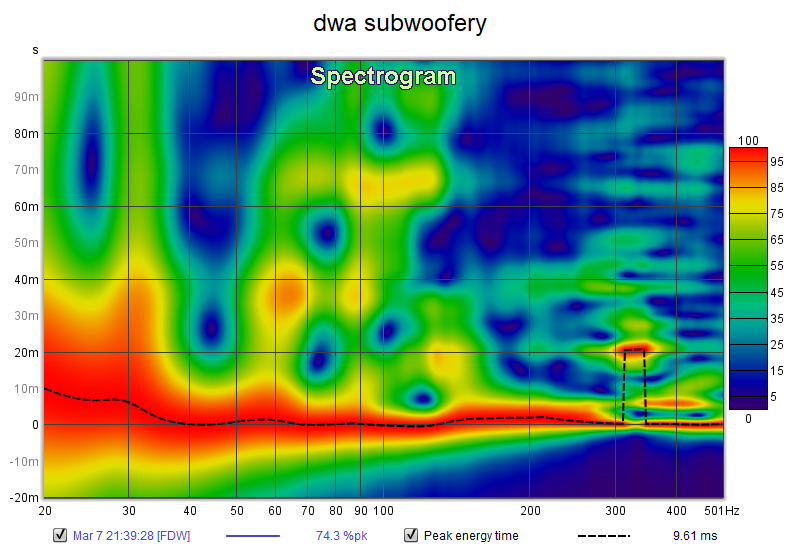on
One Or Two Subwoofers?
I believe that two (or more) smaller, cheaper subwoofers are better than one large and more expensive subwoofer. I’ll prove it with measurements.
Below I present the spectrogram of one subwoofer, placed in the front right corner of my room. The spectrogram shows how quickly individual frequencies fade away. In a perfect room, each frequency fades out after exactly one wavelength. E.g. the 20Hz wave must fully disappear after 50ms, the 100Hz wave must disappear after 10ms. Unfortunately, this is not the case in actual rooms. Sound waves can bounce off walls many times, and sometimes amplify themselves.
The graphs below show spectrogram for single subwoofer playing in the front left and right corners of my room. On every chart only 1 subwoofer is playing at a time.


The graphs show a lot of problems with resonances at particular frequencies. This makes some notes stronger and longer, while other notes sound quieter in comparison. Some notes may sound delayed. This negatively affects the perception of a musical rhythm.
However, when we connect two subwoofers in front corners playing mono, we see a much better spectrogram.

The resonance around 80Hz decreases significantly. The bass frequencies reach the listening position with lower delay. Secondary resonances decreased. The playing became more rhythmic.
Unfortunately, we have lost stereo imaging at the frequencies that are reproduced by the subwoofers. In my opinion this is a small price to pay to gain much better sense of musical rythm.
The third sub in my room didn’t have much effect on the spectrogram, but it did reduce the bass variation across different parts of the room. So I highly recommend adding two or more subwoofers to your own stereo system.